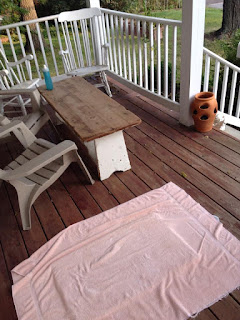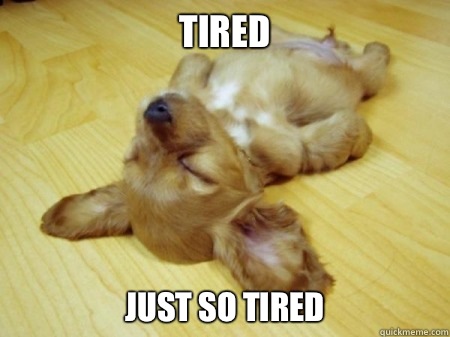The thing is, there is some actual science behind a lot of Bro Science ideas. It's just been overblown. But making some small changes can actually add up to a pretty great benefit.
Cut Some Carbs Out
One of the biggest slices of Bro Science baloney out there is that carbs somehow cause inflammation, which spikes your insulin levels and makes you fat. It's bogus. Seriously, it's bogus. I'm not kidding -- it's bogus. I think you get the idea here.
 |
| Delicious orzo salad. Carb city! |
Now let's say that you're taking in about 75 grams of protein a day -- which would be pretty average for a Regular Guy who doesn't incorporate supplements into his diet. If you bump that to 125 grams a day without changing your overall calories, you'll move 200 calories around. But the thermic effect will mean that you're burning 32 calories more, without actually giving up any food.
You may find that your calories even go down. Since protein is so much harder to digest, it makes you feel full for longer.
And it helps with muscle building, which brings us to the next point.
You Should Lift Weights
Another Bro Science myth you'll hear is that resistance training is superior to aerobic cardio for fitness, weight loss and overall health. It's not true. Regular Guys, you need to raise your heart rate if you want to burn fat.
But let's say that you lead a reasonably active lifestyle and keep an eye on your diet. In other words, let's assume that you've already lost the "easy pounds" (or never put them on in the first place). Chances are, you don't have a huge amount of body fat, and what's there isn't going away without some serious sacrifices.
You should try to add a little muscle to your frame.
Your body has something called a basal metabolic rate -- that's the amount of calories you'd burn simply sitting on the couch all day. A pound of fat will burn 2 calories per day. A pound of muscle will burn 6.
If you can add five pounds of muscle, you'll look better. Yeah, that's five extra pounds on your frame, but not the ugly belly-fat kind. You'll probably get more enjoyment out of life, because certain tasks will simply be easier. But best of all: You've raised your basal metabolic rate by 30 calories a day.
HIIT Is a Secret Weapon
 |
| This is my "home gym" for HIIT workouts. |
However, the difference in EPOC -- excess post-exercise oxygen consumption -- between HIIT and stead-steady cardio isn't zero. It's about 7 or 8 percent. So let's say you have an hour to dedicate to exercise, cooldown and shower in the morning. You could go for a three-mile run and burn 300 to 350 calories, or you can do 20 minutes of HIIT and burn the same.
But the EPOC for your HIIT workout is going to be around 45 calories, and about 20 for your run -- a difference of 25 calories, and a few minutes saved, to boot.
Don't Eat Late at Night
A lot of Bros believe that the timing of your calories makes a difference -- that is, since your heart rate is lowest when you sleep, if you eat too close to bedtime, you won't burn off the calories. That's a misunderstanding of how your metabolism works. The thermic effect of food is static -- your body
will burn the same amount of calories digesting what you eat regardless of when you eat it. And if your activity level is pretty regular, your body is going to burn the same amount of calories overall from day to day. This is the first law of thermodynamics.
 |
| There's gotta be some hummus in there! |
That said, there is a simple reason not to eat too close to bedtime: You're going to take in calories you don't need.
Some people, myself included, eat dinner too late. If you don't eat dinner until after 8:00, you're going to be hungry. Really hungry. And you're going to pig out. Even a small second helping of lean protein could cost you a couple hundred calories -- calories you might not otherwise eat.
Other people stay up too late after dinner. There's nothing wrong with a small snack in the evening, as long as it fits into your overall calorie allowance. And it doesn't have to be something healthy, either. You want ice cream? Have a small bowl. The problem is, if you eat at 6:30 and stay up till midnight, you're going to be genuinely hungry again before bed. And that too can cost you hundreds of calories.
Worse, when you're tired, you tend to make poorer food choices, and your impulse control is at its lowest. So even if another 200 calories would be warranted, it can become 400 in a snap.
Summing this up: Try not to wait till you're starving to eat dinner, and get to bed before you get hungry again. Let's say that saves you 200 calories 3 or 4 nights a week -- that's an average of 100 a day.
Adding It Up
I've touched on a lot of these topics before in the blog. And I've tried to separate science from Bro Science. But one thing I've come to realize is that even though there's a lot of BS out there, a Regular Guy can still get some benefit from the ideas the Bros swear by. So let's just say you made all four of the changes I've suggested today. You can burn 1100 to 1200 more calories a week, just by pretending the Bros know what they're talking about. Even factoring in the weight of added muscle and the lowering of your BMR as you lose fat, you could still be looking at a net loss of 10 pounds a year.
And I can tell you it works, because I'm down below my marathon weight since joining the gym at the beginning of March.
I want to hear back from you guys. What little changes have you made? What fitness wisdom do you buy into, and what have you dispensed with? Have you learned anything from the bros? Give us your best tips!









